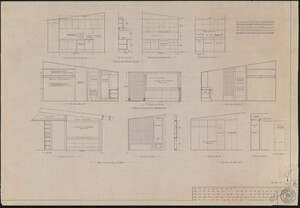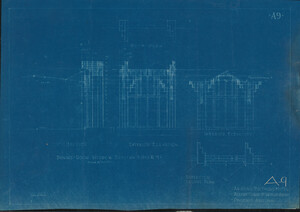My name is Harold Housley and I am the curator of the Design and the Arts Special Collections at Arizona State University Library. I am a Certified Archivist and I have worked for thirteen years at ASU Library. I am also an ASU alumnus, with a Master of Arts degree in history. In future blog entries, I will be providing more information on the collection that I manage. But in my first entry, I want to discuss what I find most rewarding about my profession.
Most people know that archivists manage "old stuff,” but without the proper historical context, it is sometimes difficult to see the value of archival materials. One of the core values that archivists follow is that we promote the use and understanding of the historical record. In other words we provide a connection to history. I don’t think I fully understood this until I was able to help a patron make this connection personal. It was truly an "aha" moment for me while working in the archives at Yellowstone National Park. In the immediate years after the park's establishment in 1872, before the number of visitors made this an impossible task, staff recorded, in leather-bound log books, the name of every visitor entering the park. So the park archives includes log books with the names of early park visitors.
After I gave a tour of the park archives to a group of summer employees, one of the employees asked me if one of the entry logs would contain the name of his great-grandfather, who had visited the park in the 1880s as part of a bicycle tour. I was able to find the record of this entry and share the employee’s excitement at looking in wonder at the log book that for him provided a personal connection to history and to his own family.
In my current position, I work primarily with architectural records, which have a wide variety of uses by various types of researchers. For example, a homeowner researching a history of their house may want to examine architectural drawings documenting the original design and later additions. An architect doing a remodeling, renovation, or restoration project may want to consult architectural drawings and photographs to ensure that the project results in the retention or enhancement of architectural integrity and appropriate design. A researcher writing the biography of an architect may want to focus on professional or personal correspondence, rather than architectural drawings or photographs, to provide historical context for the projects designed and/or completed by the architect.
While working with the Design and the Arts Special Collections, I have had the opportunity to once again experience the value of archives and the power of a personal connection to history. These have included providing access to plans and drawings of a Blaine Drake house where a researcher lived as a child:

Another way was providing access to blueprints of the Arizona Biltmore Hotel to building and maintenance staff so that they have a record of the original design to help them make sound decisions critical to the upkeep of a historic structure:

All of these experiences have solidified for me the power of making a connection to history.